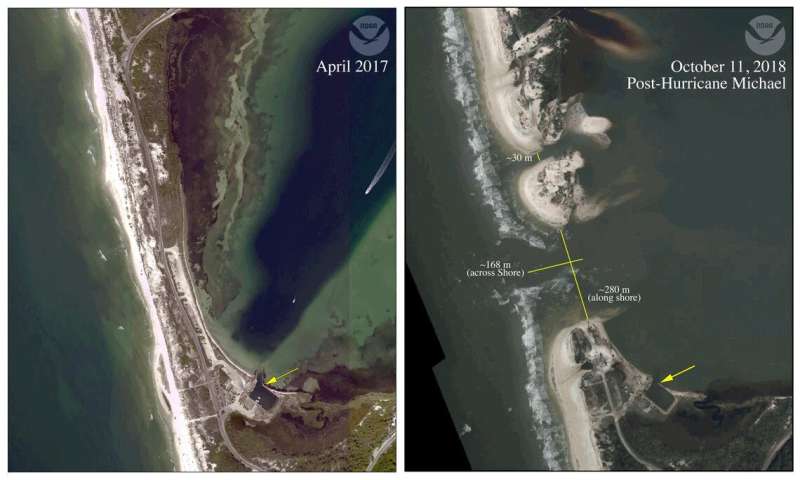Defining Hurricane Michael's impact on St. Joe Bay, Florida

Hurricane Michael tore a path through Panama City, Mexico Beach, and Port St. Joe, Florida in October 2018. The storm devastated the area and created a new pass along the St. Joseph Peninsula, just north of the entrance to T.H. Stone Memorial St. Joseph Peninsula State Park. The Bay is a Florida Aquatic Preserve and supports vast meadows of seagrass and a rich assemblage of animals that live in these grass beds. Scientists from the Sea Lab at Dauphin Island are working to understand the ecological impact this new connection to the Gulf of Mexico may have on the Bay's plant and animal life.
Past research shows that hurricanes are able to move many types of marine species across large distances. Some of these shifts can be short-lived, but there is potential for a permanent stay if the conditions are right. That's where tropicalization factors into this study.
Tropicalization is the expansion of tropical species into what were formerly temperate climate zones, such as the northern Gulf of Mexico. The warming of ocean temperatures and decline in the frequency and duration of severe winter storms reaching the coast are now making these areas suitable for tropical plants and animals to become established.
With the support of a National Science Foundation RAPID grant, Dr. Ken Heck and Dottie Byron will lead efforts to investigate to what extent the newly formed pass is allowing tropically-associated species, such as the emerald parrotfish and green turtles, both consumers of seagrasses, to become increasingly abundant, permanent residents of St. Joe Bay. If this happens, seagrass meadows could come to resemble mowed lawns, as has occurred elsewhere where seagrass consumers have become abundant, and lose their ability to provide critical shelter and food for many economically important juvenile fish, crabs, and shrimp
The research plan calls for monthly trawl surveys to assess the number of tropically associated juvenile fish in the seagrass beds, assessing and estimating the size of the green turtle population, and monthly experiments to look for potential changes in the consumption of seagrasses.
Data collected during these assessments will be analyzed beside a 12-year record of the composition and abundance of fishes in St. Joe Bay (cf. Fodrie et al, 2010; Fodrie and Heck 2011) and a population estimate of green turtle abundance in the Bay that occurred in 2017 (Rodriguez 2018, MS. Thesis).
The grant-funded project is slated to begin in April, and span 12 months.
Provided by Dauphin Island Sea Lab




















